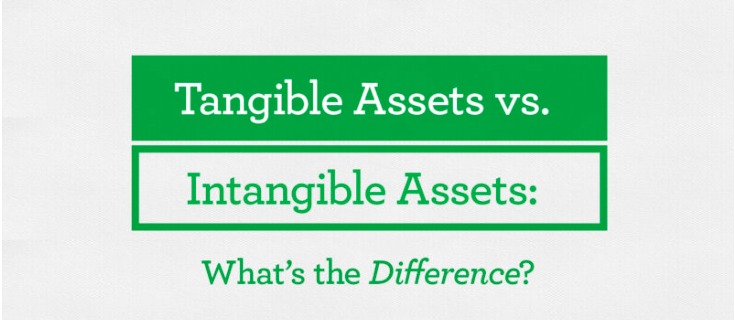
Top Real Estate Trends to Watch in 2025
The real estate industry is constantly evolving, shaped by technological advancements, economic shifts, and changing consumer preferences. As we look ahead to 2025, several key trends are expected to dominate the market. Whether you’re a buyer, seller, investor, or industry professional, staying informed about these trends can help you make smarter decisions and stay ahead of the curve. Here are the top real estate trends to watch in 2025:
1. The Rise of Smart Homes and Proptech
What’s Happening: Smart home technology and property technology (proptech) are transforming the way we live, buy, and sell real estate.
Trends to Watch:
Smart Home Integration: Homes with IoT-enabled devices (e.g., smart thermostats, security systems, and voice assistants) will become the norm.
Proptech Innovations: Platforms for virtual tours, AI-driven property valuations, and blockchain-based transactions will gain traction.
Sustainability Tech: Energy-efficient systems, solar panels, and smart grids will be in high demand.
Why It Matters: Buyers and renters are increasingly prioritizing convenience, security, and sustainability, making smart homes a key selling point.
2. Remote Work Continues to Shape Housing Demand
What’s Happening: The remote work revolution, accelerated by the COVID-19 pandemic, is reshaping housing preferences.
Trends to Watch:
Suburban and Rural Growth: Demand for homes in suburban and rural areas will remain strong as remote workers seek more space and affordability.
Home Office Spaces: Properties with dedicated home offices or flexible spaces will be highly sought after.
Co-Living and Co-Working Spaces: Shared living and working spaces will gain popularity among digital nomads and young professionals.
Why It Matters: Remote work is here to stay, and its impact on housing demand will continue to influence market dynamics.
3. Sustainability and Green Building Practices
What’s Happening: Climate change and environmental concerns are driving demand for sustainable and eco-friendly homes.
Trends to Watch:
Green Certifications: Properties with LEED, ENERGY STAR, or other green certifications will command higher prices.
Net-Zero Homes: Energy-efficient homes that produce as much energy as they consume will become more common.
Eco-Friendly Materials: Builders will increasingly use sustainable materials like bamboo, recycled steel, and low-VOC paints.
Why It Matters: Buyers and renters are prioritizing sustainability, and governments are incentivizing green building practices.
4. Urban Revival and Mixed-Use Developments
What’s Happening: After a temporary exodus during the pandemic, cities are making a comeback with innovative urban planning.
Trends to Watch:
Mixed-Use Developments: Properties that combine residential, commercial, and recreational spaces will thrive.
Transit-Oriented Developments: Homes near public transportation hubs will be in high demand.
Affordable Housing Initiatives: Governments and developers will focus on creating affordable housing options in urban areas.
Why It Matters: Urban areas are evolving to meet the needs of a diverse population, offering convenience and connectivity.
5. Generational Shifts in Homebuying
What’s Happening: Different generations have unique housing needs and preferences, shaping the market in distinct ways.
Trends to Watch:
Millennials: As the largest generation of homebuyers, millennials will drive demand for starter homes and suburban properties.
Gen Z: This generation will enter the housing market, prioritizing affordability, technology, and sustainability.
Baby Boomers: Many boomers will downsize, creating demand for smaller, low-maintenance homes and active adult communities.
Why It Matters: Understanding generational preferences is key to targeting the right buyers and renters.
6. Increased Use of AI and Big Data
What’s Happening: Artificial intelligence (AI) and big data are revolutionizing the real estate industry.
Trends to Watch:
Predictive Analytics: AI will help predict market trends, property values, and investment opportunities.
Personalized Marketing: Big data will enable hyper-targeted marketing campaigns based on buyer preferences.
Automated Transactions: AI-powered platforms will streamline buying, selling, and leasing processes.
Why It Matters: These technologies will make real estate transactions faster, more efficient, and more personalized.
7. Co-Living and Shared Housing Models
What’s Happening: Rising housing costs and changing lifestyles are driving demand for alternative housing models.
Trends to Watch:
Co-Living Spaces: Shared housing with communal areas will appeal to young professionals and students.
Multi-Generational Living: Homes designed for multiple generations will become more popular.
Short-Term Rentals: Platforms like Airbnb will continue to influence housing demand and investment strategies.
Why It Matters: These models offer affordability and flexibility, addressing the needs of a diverse population.
8. Real Estate Investment in Emerging Markets
What’s Happening: Investors are looking beyond traditional markets for higher returns.
Trends to Watch:
Secondary Cities: Smaller cities with growth potential will attract investors seeking affordable opportunities.
International Investments: Cross-border real estate investments will increase, driven by globalization and digital platforms.
Niche Markets: Specialized properties like senior living, student housing, and healthcare facilities will see growth.
Why It Matters: Diversifying into emerging markets can offer higher returns and reduce risk.
9. Regulatory Changes and Policy Impacts
What’s Happening: Governments are implementing policies to address housing affordability, climate change, and economic recovery.
Trends to Watch:
Zoning Reforms: Changes in zoning laws will encourage higher-density housing and mixed-use developments.
Tax Incentives: Governments will offer tax breaks for green building practices and affordable housing projects.
Rent Control: Some cities may introduce or expand rent control measures to protect tenants.
Why It Matters: Policy changes will shape market dynamics and create new opportunities for buyers and investors.
10. The Growing Importance of Health and Wellness
What’s Happening: The pandemic has heightened awareness of health and wellness, influencing housing preferences.
Trends to Watch:
Wellness Amenities: Properties with gyms, yoga studios, and outdoor spaces will be in demand.
Healthy Building Design: Homes with improved air quality, natural light, and non-toxic materials will gain popularity.
Proximity to Nature: Buyers will prioritize homes near parks, trails, and green spaces.
Why It Matters: Health and wellness are becoming key factors in housing decisions.
Final Thoughts
The real estate landscape in 2025 will be shaped by technology, sustainability, demographic shifts, and evolving lifestyles. By staying informed about these trends, you can make smarter decisions and capitalize on emerging opportunities. Whether you’re buying, selling, or investing, understanding these dynamics will help you navigate the market with confidence.

 February 25, 2025
February 25, 2025



